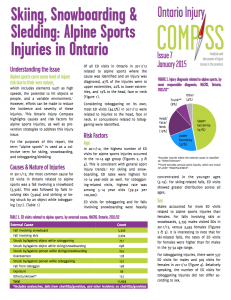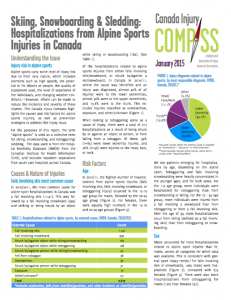Safety tips
- Inspect your toboggan to ensure it’s in good condition.
- Use only proper sliding equipment with good brakes and steering. Inner tubes and plastic discs are not recommended because they are difficult to control.
- Dress warmly. Many tobogganing injuries are cold-related, such as frostbite and hypothermia.
- The safest position to be in while tobogganing is kneeling or sitting up. Sliding on your stomach, headfirst, offers the least protection from a head injury. Laying flat on the back increases the risk of injuring the spine or spinal cord.
- Look out for others – move quickly to the side and walk up and away from the sliding path after finishing a run.
- Wear a ski helmet as head injuries while sledding can be serious. A ski helmet is recommended because they are designed for use in cold weather and for similar falls and speeds. A hockey helmet may also be used.
Choose a safe environment
- Ensure the hill is free of hazards – trees, rocks, bumps, fences and bare spots. Avoid ice-covered areas.
- Ensure the hill is away from roads, rivers or railroads and that there is plenty of room to stop at the bottom of the hill.
- Look for a hill that is not too steep (less than 30 degrees is recommended for children) and has a long, clear runoff area.
Considerations for children
- Heat loss is particularly significant in children under age three because their heads account for a larger proportion of their overall body size. Children should be dressed warmly in layers.
- After tobogganing, children should get out of wet clothes and boots quickly to prevent frostbite.
- Young children should always be supervised by an adult. They should never toboggan alone.
- Children should not toboggan at night.

